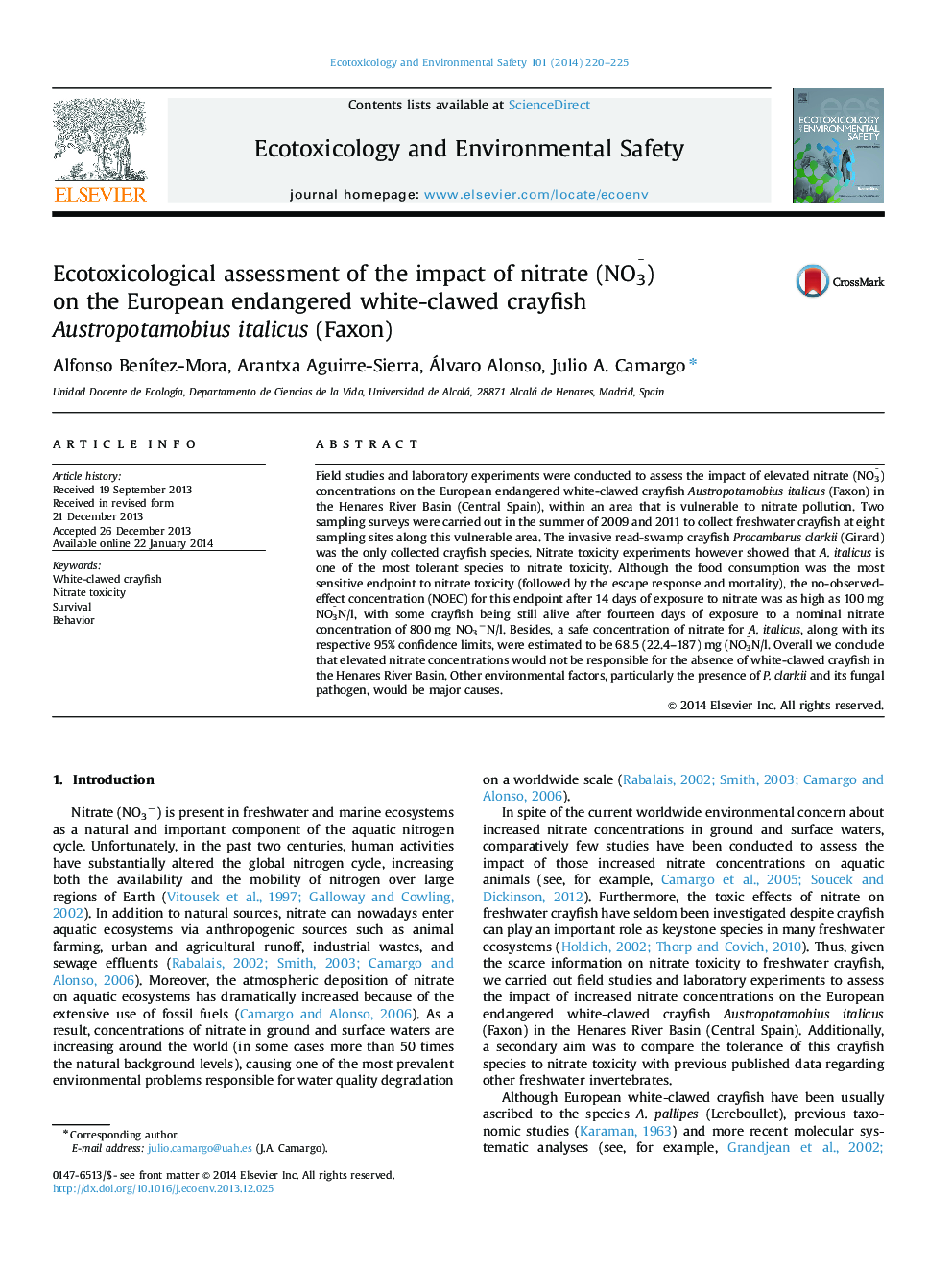| Article ID | Journal | Published Year | Pages | File Type |
|---|---|---|---|---|
| 4420229 | Ecotoxicology and Environmental Safety | 2014 | 6 Pages |
•The freshwater crayfish Austropotamobius italicus was absent at sampling sites of the Henares River Basin with elevated nitrate concentrations.•Laboratory experiments however showed that A. italicus is very tolerant to nitrate toxicity.•This high tolerance of A. italicus to nitrate toxicity may be related to its high tolerance to hypoxia.•Elevated nitrate concentrations would not be responsible for the absence of A. italicus in the Henares River Basin.
Field studies and laboratory experiments were conducted to assess the impact of elevated nitrate (NO3¯) concentrations on the European endangered white-clawed crayfish Austropotamobius italicus (Faxon) in the Henares River Basin (Central Spain), within an area that is vulnerable to nitrate pollution. Two sampling surveys were carried out in the summer of 2009 and 2011 to collect freshwater crayfish at eight sampling sites along this vulnerable area. The invasive read-swamp crayfish Procambarus clarkii (Girard) was the only collected crayfish species. Nitrate toxicity experiments however showed that A. italicus is one of the most tolerant species to nitrate toxicity. Although the food consumption was the most sensitive endpoint to nitrate toxicity (followed by the escape response and mortality), the no-observed-effect concentration (NOEC) for this endpoint after 14 days of exposure to nitrate was as high as 100 mg NO3¯N/l, with some crayfish being still alive after fourteen days of exposure to a nominal nitrate concentration of 800 mg NO3−N/l. Besides, a safe concentration of nitrate for A. italicus, along with its respective 95% confidence limits, were estimated to be 68.5 (22.4–187) mg (NO3¯N/l. Overall we conclude that elevated nitrate concentrations would not be responsible for the absence of white-clawed crayfish in the Henares River Basin. Other environmental factors, particularly the presence of P. clarkii and its fungal pathogen, would be major causes.
